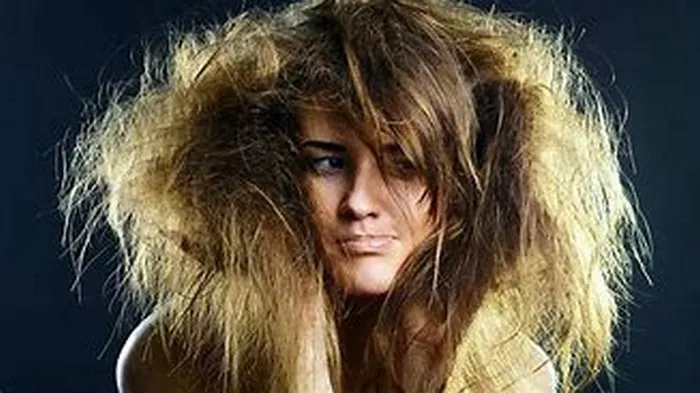In the realm of hair care, there are numerous terms and conditions that one may encounter. From split ends to frizz, the lexicon of hair health is extensive. Among these terms, “fried hair” stands out as a particularly vivid descriptor. But what exactly does it mean to have fried hair, and what does it feel like? In this comprehensive guide, we delve deep into the characteristics and sensations associated with fried hair.
Defining Fried Hair
Before exploring the tactile experience of fried hair, it’s crucial to understand what causes this condition. Fried hair typically occurs as a result of excessive heat styling, chemical treatments, or environmental factors such as sun exposure. When hair is subjected to high temperatures from tools like flat irons, curling irons, or blow dryers, the heat can damage the hair’s outer layer, known as the cuticle. This damage can manifest in various ways, including dryness, brittleness, and breakage.
Chemical treatments, such as bleaching, perming, or coloring, can also contribute to hair damage. These processes often involve the use of harsh chemicals that strip away the hair’s natural oils and weaken its structure. Additionally, exposure to environmental stressors like UV radiation and pollution can further exacerbate hair damage, leading to the characteristic fried appearance.
The Sensation of Fried Hair
Now that we have a foundational understanding of what causes fried hair, let’s explore the sensory experience associated with this condition. Fried hair often feels markedly different from healthy hair, with several distinctive characteristics:
1. Dryness: One of the primary sensations associated with fried hair is extreme dryness. The damaged cuticle is unable to retain moisture effectively, leading to a parched and brittle texture. Running your fingers through fried hair may evoke a sensation akin to straw or hay, lacking the smoothness and suppleness of healthy strands.
2. Roughness: Fried hair tends to feel rough and coarse to the touch. The damaged cuticle no longer lies flat, resulting in a surface that is uneven and jagged. As a result, the hair may feel rough and abrasive, lacking the sleekness and silkiness of undamaged hair.
3. Brittleness: Another characteristic sensation of fried hair is brittleness. The structural integrity of the hair shaft becomes compromised due to the damage sustained by the cuticle. As a result, the hair may snap or break easily, particularly when subjected to manipulation or styling. This brittleness can be especially pronounced towards the ends of the hair, where damage tends to accumulate over time.
4. Tangling: Fried hair is more prone to tangling and knotting than healthy hair. The roughened surface of the damaged strands can catch and intertwine more easily, leading to frustrating tangles that are difficult to comb out. This increased propensity for tangling can further contribute to hair breakage and damage if not handled with care.
5. Lack of Elasticity: Healthy hair possesses a certain degree of elasticity, allowing it to stretch and return to its original shape without breaking. In contrast, fried hair may exhibit reduced elasticity due to the loss of moisture and structural integrity. When stretched, fried hair may feel stiff and resistant, lacking the springiness and flexibility of healthy strands.
Managing Fried Hair
While the sensation of fried hair can be disheartening, there are steps that can be taken to manage and improve its condition:
1. Trimming: Regular trims are essential for removing split ends and preventing further damage. By eliminating the most damaged portions of the hair, you can promote healthier growth and improve the overall appearance and texture of your hair.
2. Moisturizing: Hydration is key to restoring moisture to fried hair. Incorporate hydrating hair care products such as shampoos, conditioners, and hair masks into your routine to replenish lost moisture and nourish the hair from within.
3. Gentle Styling: Minimize heat styling and opt for heat-free alternatives whenever possible. When using heated styling tools, always apply a heat protectant spray to shield the hair from damage. Additionally, avoid tight hairstyles that can put stress on the hair shaft and exacerbate breakage.
4. Protective Measures: Protect your hair from environmental stressors by wearing a hat or scarf when exposed to the sun, wind, or harsh weather conditions. Consider investing in a satin or silk pillowcase to reduce friction and prevent further damage while you sleep.
5. Nutrition: A balanced diet rich in vitamins, minerals, and essential fatty acids can support healthy hair growth and overall hair health. Incorporate nutrient-dense foods such as fruits, vegetables, lean proteins, and omega-3 fatty acids into your meals to nourish your hair from the inside out.
By adopting these strategies and making conscious choices to care for your hair, you can gradually improve the condition of fried hair and restore its vitality and luster. Remember to be patient and consistent in your efforts, as repairing damaged hair takes time and dedication.
Conclusion
The sensation of fried hair is characterized by dryness, roughness, brittleness, tangling, and a lack of elasticity. This condition often arises due to excessive heat styling, chemical treatments, and environmental damage. By understanding the causes and sensations associated with fried hair, as well as implementing effective management strategies, you can take proactive steps towards restoring the health and vitality of your hair. With patience, care, and the right approach, you can say goodbye to fried hair and hello to strands that are strong, smooth, and resilient.


